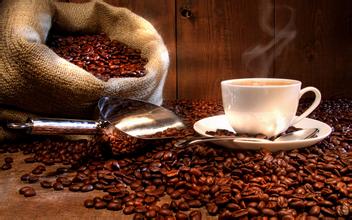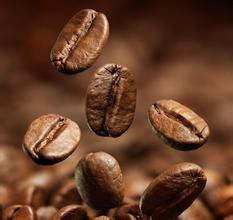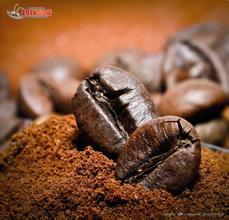How to adjust the scale of coffee grinder
The most difficult part of adjusting the electronic bean grinder is that when you adjust the grinding parameters, the distance between the knives will change accordingly, and the change of this distance will directly affect the powder output of the bean grinder, that is, the grinding and pulverizing time. If you want to make the grinding degree finer, the distance between the sharpening knives will become closer, and there will be fewer coffee beans passing through the sharpening knife at the same time. On the contrary, the distance between the sharpening knife becomes larger, and the coffee beans that pass through the sharpening knife will become more at the same time. In general, the distance between the correct weight, flattened and powdered pressed powder and the outlet should be 5-6 mm. If the height of pressed powder is not in this range, you should try to adjust the powder output of the bean mill (that is, grinding and pulverizing time). When adjusting the amount of flour, the range of each adjustment should be between 0.2 and 0.3 seconds, after each adjustment, you need to recheck the quality of the coffee. The ordinary electronic bean grinder will adjust the grinding and milling time of the bean mill according to the pre-set amount of flour (please note that the amount of flour is adjusted by the mill according to time rather than weight). If you are not satisfied with the quality of the coffee, the first thing you need to do is to determine whether there is a problem with the amount of powder or the degree of grinding. the debugging of the electronic bean grinder mainly focuses on two variables, the amount of powder and the degree of grinding. These two variables are mutual. If you change one of them, the other will also change the specific operation steps.
Determine the direction of adjustment you need (finer or thicker). Make sure there are enough coffee beans in the warehouse, and the valve between the warehouse and the sharpening knife is opened so that the coffee beans can fall smoothly into the grinding area.
Turn on the grinder for 10 seconds and discard the coffee powder (these are coffee powders that have not been adjusted).
Use the coffee powder to make a cup of coffee to ensure the accuracy of the steps of serving, flattening and pressing powder. Test the quality of the coffee and the extraction time. Constantly adjust the dial to make the powder reach a perfect thickness.
Debugging of electronic bean grinder
Different bean grinders have different adjustment dials, so you should check the model of the coffee grinder and read the instructions carefully to determine the direction and strength of the dial. In general, if you keep in the habit of checking the settings of the bean grinder, you only need to make very small adjustments. As long as you move the turntable within 3 mm, you can change the thickness of the powder. Although 3 mm is a very small number, the grinding time of the same coffee beans will change for 3-5 seconds to observe the coffee powder. High-quality coffee powder should be powdery and gravel. If the coffee powder is soft, like flour, it means the powder is fine. On the contrary, if the coffee powder feels tough and rough, it means the powder is too coarse. When the coffee bean enters the grinder, the blade in the grinder will crush the coffee bean into powder. The smaller the distance between the blade and the blade, the smaller the coffee beans will be ground into smaller particles. The finer the grinding particles are, the tighter they are, and the more difficult it is for the water to pass through, thus greatly prolonging the extraction time. On the contrary, if the distance between the blades increases, the ground particles will become rougher, the flow of water will be easier to pass through, and the extraction time will be faster. To take a simple example, like stones and fine sand, water flows much faster through stones than fine sand, because there is more space between the stones for the flow of water to pass quickly. Therefore, the correct grinding is very important, and the particle size directly affects the quality of the extraction.

Important Notice :
前街咖啡 FrontStreet Coffee has moved to new addredd:
FrontStreet Coffee Address: 315,Donghua East Road,GuangZhou
Tel:020 38364473
- Prev

What kind of milk is not suitable for coffee brocades?
Once the milk reaches 60-80 degrees Celsius, the steam bar can be turned off. Some baristas know the temperature by touching it, while others listen to the tone of the steam to determine the temperature. You might as well do an experiment with a clip thermometer first, which will be more accurate. If the milk bubble pot knocks on the table a few times, the big milk foam will be swept away, and the milk bubble will be finer. If the steam stick does not sink to the bottom of the pot, hot milk and milk
- Next

What should I pay attention to when making coffee and how to make coffee tastes better?
What should I pay attention to when making coffee and how to make coffee tastes better? Drinking coffee is best after breakfast and lunch, because it can promote gastrointestinal peristalsis, help digestion, can break down high-calorie, high-fat foods, and will not cause irritation to the stomach like drinking coffee on an empty stomach. It is best not to drink coffee after dinner to avoid affecting sleep. If you want to rely on
Related
- What brand of black coffee is the most authentic and delicious? what are the characteristics of the flavor of the authentic Rose Summer Black Coffee?
- Introduction to the principle and characteristics of the correct use of mocha pot A detailed course of mocha pot brewing coffee is described in five steps.
- Which is better, decaf or regular coffee? how is decaf made?
- How much is a bag of four cat coffee?
- How about four Cat Coffee or Nestle Coffee? why is it a cheap scam?
- Which is better, Yunnan four Cats Coffee or Nestle Coffee? How about cat coffee? is it a fake scam? why is it so cheap?
- How about Cat Coffee? what grade is a hoax? which instant coffee tastes better, four Cat Coffee, Nestle Coffee or G7 coffee?
- Process flow chart of coffee making-Starbucks coffee making process what coffee tastes good at Starbucks
- The top ten best coffee beans in the world Rose summer coffee or Tanzanian coffee tastes good
- Yunnan four cat coffee is good to drink?_four cat coffee is a big brand? four cat blue mountain coffee is fake?

